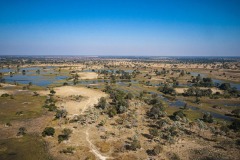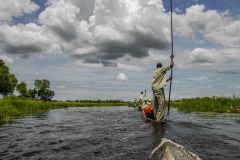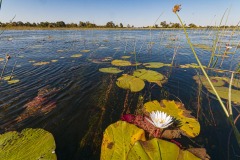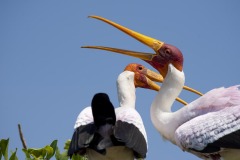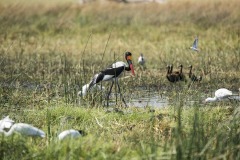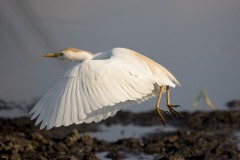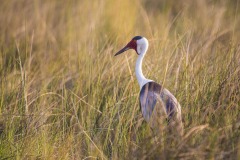
THE OKAVANGO DELTA
The Okavango Delta is a large inland delta formed after the Okavango River reaches a tectonic depression in the central part of the endorheic basin of the Kalahari in Botswana. Annually about 11 billion cubic meters of water flow into the delta and spread over an area of about 250 by 150 km (about 15,000 sq. miles). The Okavango River drains the waters collected during the rainy season (January – February) in the highlands of Angola and reaches the delta, months later, after traveling 1,200 km, then slowly flooding the surface of the delta between the months of March and June. This way its surface increases about three times which attracts an infinity of fauna, with a large concentration of wild life, one of the biggest in Africa
The fate of the delta waters was almost a mystery for many years. Today it is known that approximately 60% of this volume of water is transpired by plants, 36% evaporates due to high temperatures, 2% percolates into the aquifer system and only 2% flows into Lake Ngami.
The most important aquatic plants in the delta are papyrus and reeds. These are trapping the sand in suspension and progressively forming rectilinear islands that follow the course of the watery channels of the delta. These islands are first colonized by termites that produce huge termite mounds up to 4 meters high and on which the tree vegetation grows. This topography is in constant evolution; where there are channels today, there will be islands tomorrow and new channels will sweep away other existing islands. The largest island in the delta is Chief’s Island, 70 km long and 15 km wide, which was formed by an uplift along a fault. It was Chief Moremi’s hunting ground and is now part of the Moremi Wildlife Reserve in the heart of the Okavango.
The Okavango Delta is home to a profuse and diverse fauna, both resident and seasonal. Among the most important species we can find: Elephant, Buffalo, Hippopotamus, Lechwe, Tsessebe, Sitatunga, Blue Wildebeest, Giraffe, Crocodile, Lion, Cheetah, Leopard, Brown Hyena, Spotted Hyena, Springbok, Greater Kudu, Sable Antelope, Black Rhino, White Rhino, Plains Zebra, Warthog, African Wild Dog and Chacma Baboon. The delta also includes more than 400 species of birds, including African Fish Eagle, Pel’s Fishing Owl, Crested Crane, Lilac-breasted Roller, Hammerkop, Ostrich, and Sacred Ibis. The population of large mammals has been estimated at about 200,000 including about 30,000 elephants and buffalo and about 60,000 Lechwe, many of which leave the delta when the summer rains come in search of new, green pastures and then return when winter approaches. There are also about 70 species of fish, the same ones found in the Zambezi River, indicating an ancestral connection between the two river systems.






